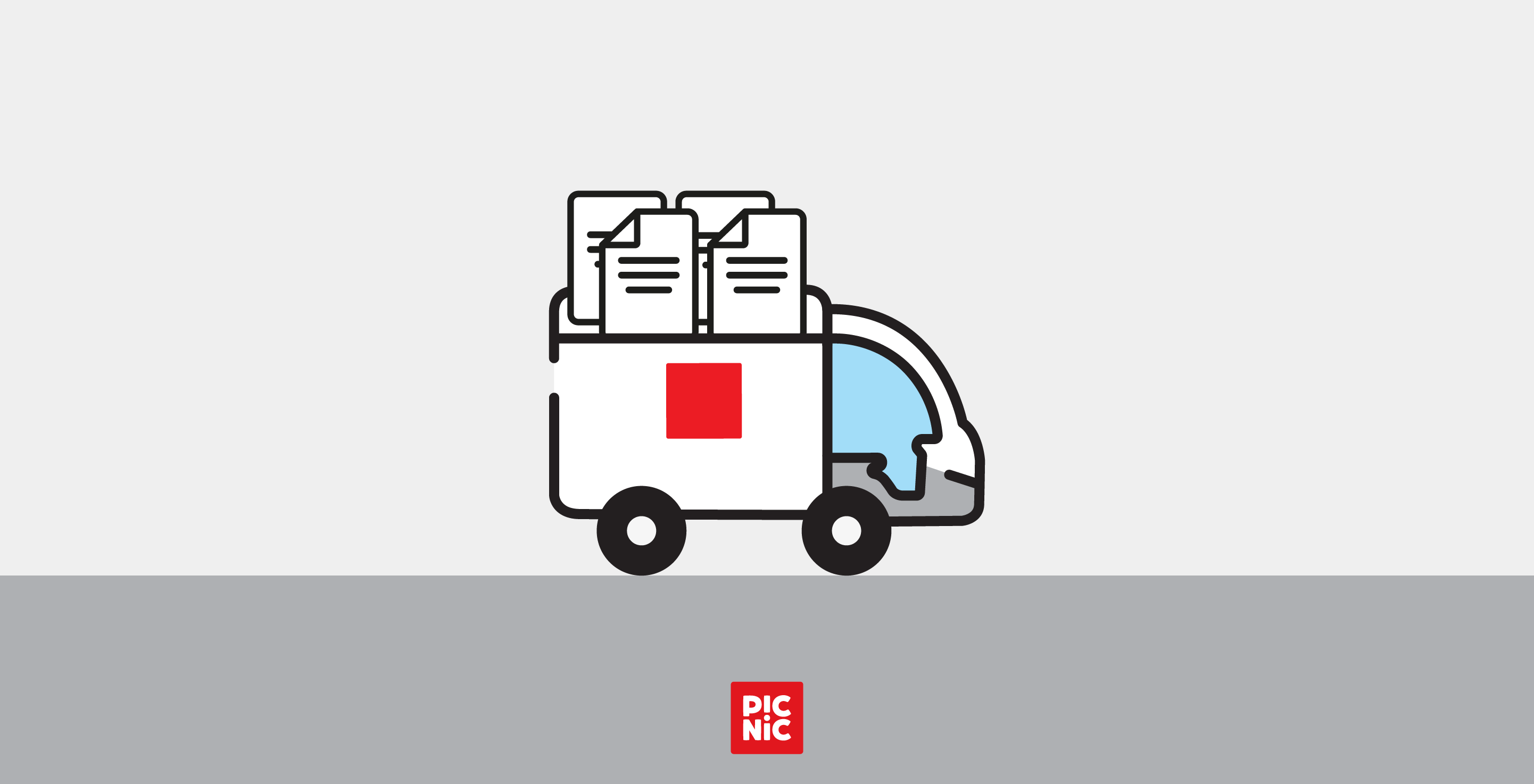In The Netherlands, Germany, and France, Picnic has built a backbone of electric vehicles driving from hubs to thousands of customers on a daily basis.
This network of locations and the routes between them is being used for delivering groceries, of course, but also for other services, for example picking up parcels or glass bottles to be recycled.
The topology formed by this set of houses and roads resembles a network topology, very much like the internet topology. What if we were using that network as a transport layer to deliver internet content to our customers?
What’s a sneakernet?
Sneakernet is an informal term for the transfer of electronic information by physically moving media such as magnetic tape, floppy disks, optical discs, USB flash drives, or external hard drives between computers, rather than transmitting it over a computer network.
In other words, instead of using WiFi, coaxial cables, or optical fiber, information is shared between computers by moving storage media. The term comes from people wearing sneakers to actually walk somewhere in order to deliver content, thereby replacing a route of cables.
While sneakernets have often been used to distribute pirated content, or distribute media in remote locations without an internet access point, they are still relevant to this day. A famous example is the AWS Snowmobile, a truck that can transport up to 100 petabytes to an AWS datacenter.
The Picnic vehicle transport layer
Never underestimate the bandwidth of an electric Picnic vehicle full of tapes hurtling down the delivery area. ^
Nowadays, SD and microSD cards can be used with most smartphones and computers, and their capacity reaches 1 TB. Moreover, they are reliable, small, and lightweight, making them good candidates to be transported in customer totes, along with bananas and other groceries.
Assuming a customer orders their food and internet content through the Picnic App 24 hours in advance, and receives one such SD card, the effective bandwidth of the network can be computed as follows:
bandwidth = (1 * 8 * 10¹²) / (24 * 60 * 60) ≈ 92 Mb/s
While this might not look impressive to urban readers used to gigabit networks, such bandwidth can certainly be welcome in more remote locations. Moreover, it easily scales: if 11 SD cards can be safely carried between two packs of milk bottles, every customer can benefit from a gigabit network!
We’ve proved that our transport layer can reach very high bandwidths. Let’s also look at another property of the network, its resiliency. Thanks to a very optimized route planning process, smart and safe vehicles, and a myriad of software applications and devices improving the groceries delivery experience, Picnic has been shown to be very reliable, even under bad weather conditions.
On top of this, a Picnic vehicle delivers to multiple houses during a single trip. This can be leveraged to connect customers together, without requiring the data to travel back and forth between a hub and those customers. This effectively creates a peer-to-peer network of customers, who can exchange high quantities of data without using their own sneakers! Mesh networks, the Picnic way.
Finally, the Picnic vehicle transport layer is eco-friendly: the weight of a few hundred SD cards is negligible compared to the rest of the load, meaning the vehicle’s battery life is not impacted.
Applications
Naturally, a high bandwidth is not enough to compete with Internet Service Providers, and the Picnic vehicle transport layer suffers from a high latency. While it takes 24 hours (assuming an order is placed the day before) to deliver an impressive 11 TB, it also takes 24 hours to deliver a single byte.
A simple TCP 3-way handshake would then take 3 days to establish, making some internet applications like first-person shooter video games not exactly convenient to play.
With low-latency video games out of the way, let’s focus on some applications on top of this transport network, which leverage its qualities: high bandwidth and resiliency. They include:
- Web page order through the Picnic App. Can’t load a Wikipedia page, or start a Google search, because your internet connection is too slow or unavailable? Order it directly in the app! SSL handshakes and other boring details are performed for you in Picnic’s warehouses — you simply order HTTP content with URLs, and receive it the next day.
- Picnic Mail and instant messaging. Leverage the network to communicate with your friends who are also Picnic customers. Benefit from the best-in-class routing protocol and file attachments up to 1 TB.
- Any Layer 7 application. Picnic provides network and transport, and anything can be built on top of that. What about DNS for supermarket products? Or POP3 for the latest articles in stock? NTP to never miss your scheduled delivery? A whole range of creative applications is made possible.
Conclusion
We are delighted to announce the launch of the Picnic sneakernet, and we hope that it will allow many new applications to be developed. From web content delivery, to Picnic Mail, to any other protocol that can be built on top of it, we are very excited to facilitate digital interactions for our customers.
We have named this new ecosystem the Amazing Picnic Resilient Infrastructure Leveraged For Online Order Loaded Safely. Maybe worth an acronym? 😉
Want to build sneakernets and more? Check out our Careers page!


 Erdem Erbas
Erdem Erbas







